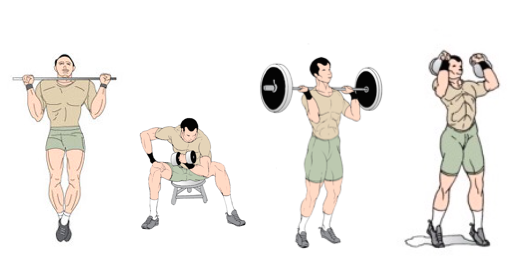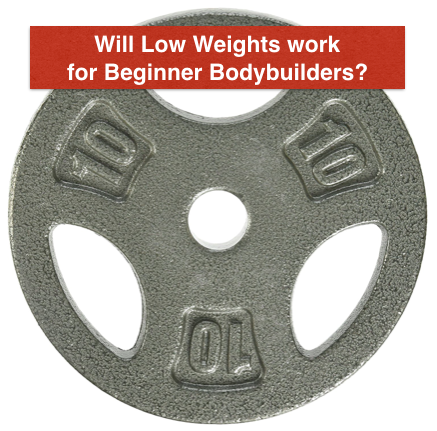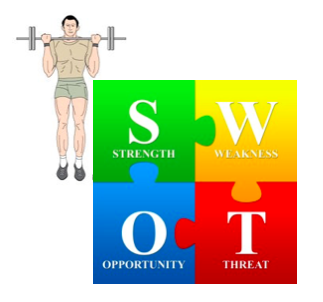How to Perform Deadlift Exercise for Mass and Strength
By the end of this deadlift exercise article you will discover:
- How to master the perfect deadlift and
- How to use deadlifts to build bigger leg, back and arm muscles in as little as 4 weeks.
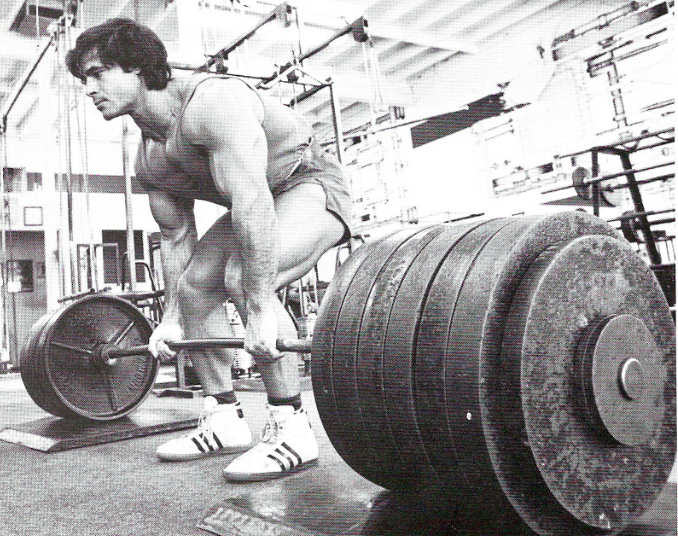 Heavy deadlifts are the BASE of any muscle building program.
Heavy deadlifts are the BASE of any muscle building program.Why Deadlift Rules in the kingdom of Exercises
As you know Big, multi-joint exercises like squats, deadlifts and presses should be the base of your muscle building program. But do you know the one exercise that rules them all and should be the first big move you master?
It is the deadlift and is the king of ALL Exercises.
If I am given a chance to use only exercise to build muscle mass for my client, I will choose the deadlift. Why?
- Deadlifts are killer Mass Builders. Want to build bigger back, muscular legs and bigger arms? Do the deadlift.
- Deadlifts build functional muscle & strength. Want functional muscle building? Do the deadlift. Bend and pick is the commonest everyday move.
- Deadlifts help other lifts. Want to build strong trunk and posterior chain muscles? Do the deadlift.
But don’t just do deadlifts, max it out. Go heavy and by heavy I am talking about 1-2 times your bodyweight. Only then you will see the true power of deadlifting.
Lets pack some lean muscle and strength.
Inside This article:
- Why deadlifts are the fastest muscle builder
- Why most bodybuilders avoid deadlifts
- Why form and technique matters for deadlifts
- How to perform the perfect Conventional deadlift
- Deadlift rep, set & Tempo scheme for muscle gains
- How to make deadlift even deadlier
- When to perform Deadlift variations for variety and gains
- The best muscle building program
Why Deadlifts are the Fastest Muscle and Strength Builder
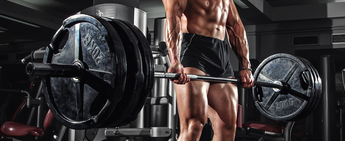
Or Why deadlifts should be the first exercise you master
Deadlift is the ultimate total body exercise and should be the fundamental move of any muscle and strength program.
Why? Because heavy deadlifts:
- Builds muscle fast
- Builds strength and
- Helps improve other big lifts
My goal is to help you master deadlift exercise and give training strategies that will help you lift 1-2 times your bodyweight in deadlifts.
Why Deadlift Rules
There are three big reasons why deadlift is THE best exercise to build muscle mass.
1. Deadlift targets TWO Biggest muscles groups at once
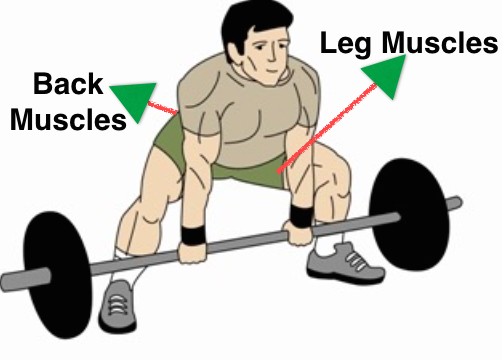
Deadlifts are a multi-joint exercise. They work your hips, spine and knee joints at once targeting your big back and leg muscles in one single move.
Not to mention your arms {biceps/triceps}, trapezius, forearms, calves and shoulder muscles receive high isometric stimulation during heavy deadlifts and heavy isometrics have been proven to stimulate muscle growth.
And of course, the more muscles are used, the more anabolic hormones are released.
2. Deadlifts help you lift the maximum amount of weights for any exercise
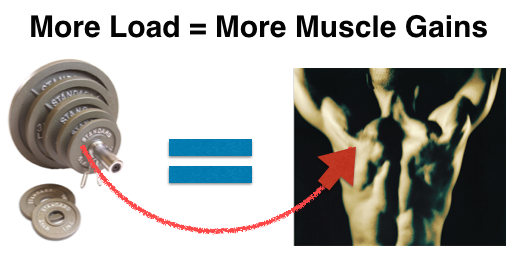
Remember the first rule of selecting a muscle building exercise? Its the Load.
"The bigger the load you can lift, the better the exercise".
Heavy weights release maximum testosterone and growth hormone and create intense metabolic stress - both triggers of muscle hypertrophy.
I have covered it in the exercise selection and the science of muscle growth. Here are the facts:
- Deadlifts help you lift MAXIMUM WEIGHTS than any other back or leg exercise
- Deadlifts help you hold MAXIMUM Weights than other arm, shoulder, traps, calves or leg exercise.
Not convinced? Just look at a olympic lifter doing deadlifts. His forearms stand out like chords, his traps and shoulders feel super-tensed.
I say these to stress the importance of HEAVY LOADS when deadlifting. Because you will never receive such stimulation from low weights. Heavy weights means at least 1-2 times your bodyweight.
3. Deadlifts create a balanced body - muscle and strength wise
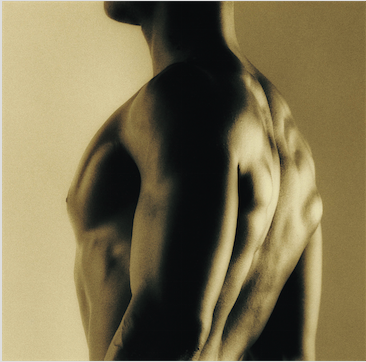 Balance between chest and back, quadriceps and hamstrings is need for muscular perfection.
Balance between chest and back, quadriceps and hamstrings is need for muscular perfection.They create a balanced body.
Since we work on mirror muscles more, we need a balance between front and back muscle strength or we risk injury, have incomplete body development and an imbalanced physique.
So to conclude, deadlifts:
- Help you lift super heavy weights
- Target more muscles than other exercises
- Create muscle and strength balance and
- Gives you a big back, sexy legs and arms
So if deadlifts are such a cool muscle builder why do most muscle builders don’t do it?
Why most Bodybuilders avoid Deadlift
There are three reasons.
1. Deadlifts are brutal, very difficult on your body.
Besides the squat, deadlift is a very tough exercise. It is tough on the entire body - hands, back and legs. Most people don’t do it, but most people don’t have the body of their dreams either.
2. Many believe deadlifts are dangerous
Unless you suffer from disc herniation or similar disc problem, properly performed deadlifts are safe, effective and a healthy back exercise. So put both reasons and excuses to rest and jump in.
3. Deadlift trains muscle mostly not seen in mirrors
Most people avoid deadlifts. Or if they train deadlifts, they do so with moderate intensity as it does not work on mirror muscles.
What are mirror muscles? Muscles like arms, shoulder or even quads, which are easy to see during lifts.
We live in a visual society. What's not seen goes unnoticed.
Deadlifts is a posterior chain exercise and can you see the muscles on the back of your body? No.
Hence deadlifts are skipped {they are hardest exercise too} or trained with moderate weights. Big mistakes.
You are a smart bodybuilder, so I expect you avoid such blunders which will limit your muscle gain potential.
I know you are excited enough to start doing deadlifts today but wait tiger! First learn why form matters most when doing deadlifts.
Why Form and Technique matters for Deadlift
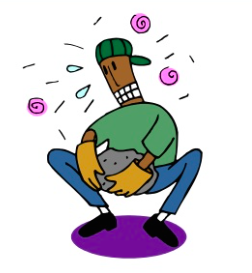 Don't worry. Deadlifts are safe!
Don't worry. Deadlifts are safe!Deadlifts and Squats have got some bad reputation. They hurt back, they are dangerous, etc
My word: Properly performed deadlifts are the safest, most efficient way to build muscle, build strength and build a healthy pain free back.
Deadlifts allow heavy weights but remember It is not the poundage, but poor alignment that gets you injured.
Its not the exercise but improper form and poor technique that gets you injured. So learn perfect form first, heavy poundages will come soon. You will be building a healthier back too and be part of happy minority {majority of our population, nearly 99% will get back pain at some point in their lives!}
But how do you perform the perfect deadlift with correct form and technique? lets find out...
How to Perform the Perfect Conventional Barbell Deadlift Exercise
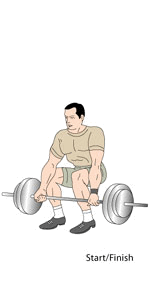
To perform deadlift all you need is a barbell with plates. And some space of course. This is the biggest advantage with deadlift, unlike heavy squats which require a squat rack.
Although floor mats are recommended, most gym floor or basement floors are ok.
And you need flexible hamstrings. Poor flexibility? Do these stretches to improve your hamstring flexibility for perfect deadlifts.
Muscles Targeted in Deadlift
Primary Movers: Upper, Middle and Lower Back, Spinal Erectors, Gluteal muscles, Quadriceps and Hamstrings
Secondary movers: Arms, Shoulders, Knees, Calves, Trapezius, Forearms {Isometric Contractions}
The Deadlift Technique

Dead lift is essential a 3 phase pull-pull-squeeze exercise where you need to master the 3 phases - the initial pull, the middle and the lockout squeeze.
Phase One: The Initial Pull: This phase starts with the weights resting {dead} on the floor and you lift them just below knee level.
This phase starts with you Thrusting your feet into the ground to get the weights off.
Phase Two: The Middle Pull: In this phase you pull the weight from below knee level up to above knee level.
Your lower back muscles, glutes and hamstrings should fire at this point.
Phase Three: The Lockout: In this phase you squeeze your glutes and thrust your hips to complete the move.
Deadlift Stance, Grip and Straps/Footwear Tricks
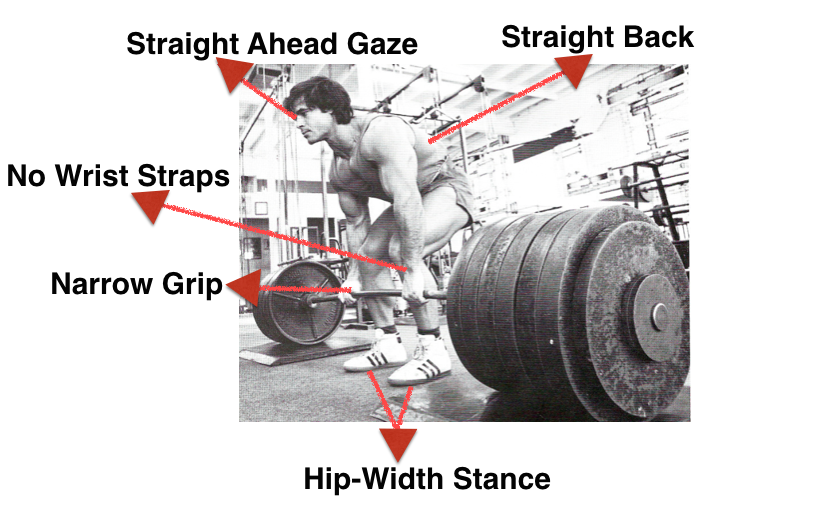 The Perfect Deadlift grip, Stance and Posture
The Perfect Deadlift grip, Stance and PostureStance: Take a hip width apart stance and stand with vertical legs, pointing legs straight forward.
Charles Poliquin says, "Set yourself like if you were going to jump vertically for a maximum effort”. This is the best way to assess your stance in my opinion too.
Grip: Take a narrow grip. Since our goal is to lift maximum weights, we should the distance the bar has to travel the smallest.
Two grips:
1. Use an overhand grip. This creates balanced muscle development.
2. If you use the famous mixed grip, alternate your hands every set, not every rep. This creates balanced development.
Posture: Keep the back as straight as possible, but don’t over-extend. Keep a slight bent in your knees and your head straight as in looking straight ahead. Hips should not be too high or too low.
Straps and Footwear:
Avoid wrist straps until you can deadlift your bodyweight. Improve your grip strength instead.
Minimal footwear: Thin soled shoes are best. You need to develop what we exercise physiologists call proprioceptive sensation, the foot-ground sense. It has proven to improve lifting strength.
Incorporate the 5 strategies for better lifts in any exercise article here - abs and Butt tight, total body tension, etc
1. The Initial Pull:
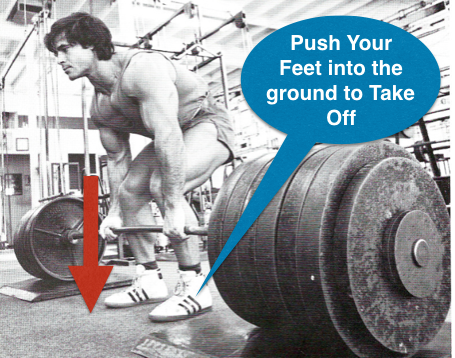 Initial Pull start with the feet push into the ground
Initial Pull start with the feet push into the ground1. Breathe in: Take a deep breathe in to increase your intra-abdominal pressure. This will stabilise your spine, produce more force and keeps your spine safe too.
2. Lift off: I imagine the weight glued to the floor and I need to push off my feet into the ground to lift them. Keeping you elbows locked, lift the weight in one smooth motion by thrusting your heels.
Nice Tip: Slowly and deliberately push the floor away with your feet, as if you are jumping in slow mo.
Push with your heels, not toes. Keep your gaze straight ahead at all times.
2. The Middle pull:
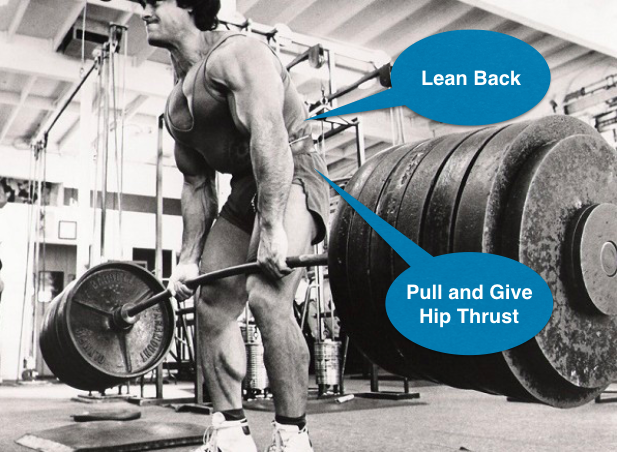 The Hip Thrust
The Hip ThrustI call it the hip thrust with lean back.
1. Hip Thrust: As you continue to lift the weight from knee level, thrust your hips forward and
2. Lean Back: lean back with your shoulders and squeeze your glutes as hard as possible.
Two cool tips:
During the first two phases;
- keep thinking as if you are pulling the bar towards you, not straight upwards.
- keep the bar close to your shin at all times.
3. The Lockout:
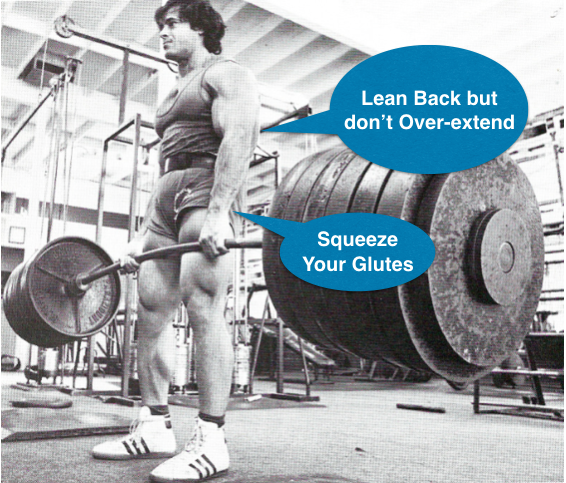 The Butt Squeeze
The Butt SqueezeKeep leaning back, squeeze out butt {glutes}. Contract your glutes with walnut-cracking power to finish the deadlift movement.
Lean back but don’t over extend your back
Finish the Move:
Lower the weight by bending your hips first, as if you are sitting in a chair. Bend your knees and go down in a controlled fashion, not too fast and not too slow.
Strength Coaches agree that, "An attempt to slowly lower the bar tends to throw the weight forward and overstress your back".
Although you know the power of eccentrics {negatives} and a slow descent, do not over-slow the movement.
Remember lower the weights, not drop them.
That marks ONE REP.
Done properly with heavy weights deadlifts stimulate muscle growth like no other exercise can.
But will you do it with perfect form? Will you work progressively harder to lift 1-2 times your bodyweight?
Its up to you.
Breathing during Deadlifts
3 Key points:
- Take a deep breathe in and grip the bar
- Pull. Hold the breathe until near completion of the lift
- Exhale fully at the top position with a swoosh, take a deep breathe in until halfway down
Repeat the breathing pattern
So confident of your deadlift exercise form? How can you create maximum growth with deadlifts?
Use the proper...
Deadlift rep, set and tempo scheme for muscle gains
Deadlifts target the highest threshold muscle fibers of almost all major muscle groups.
Repetition scheme of 5-10 reps works best for fast muscle gains.
Multiple set scheme of 3-4 sets are optimal for muscle growth.
Rep Tempo: 2120 tempo is best for deadlifts. Lower for 2 seconds, one second pause at bottom and 2 seconds to lift and a small squeeze at the top.
Fast lowering is a must to avoid injuries.
Deadlift Nutrition for faster gains in muscle and strength
Deadlifts are brutal on the body. You need complete muscle and nervous system recovery before the next session.
Use quality muscle building nutrition including post-workout nutrition for faster muscle growth and recovery. Do not underestimate the role of nutrition.
How to Make Deadlifts even deadlier
Here are 5 strategies to make deadlifts work even better.
1. Increase depth: Stand on couple of blocks or heavy plates. This increases the range of motion and targets your back and leg muscles even harder. it is a surefire muscle builder for skinny legs.
2. Recover completely: Take one week off completely after heavy deadlifts. The brain takes high time to recover from such a heavy lift. Unless you are doing low weight deadlifts too, once a week is best option.
3. Progressive Overload: Use the progressively overload principle to increase loads consistently. Add 1-2% loads every week and see deadlift work the magic.
4. Get flexible: Work on hamstring and ankle flexibility to improve deadlifts. Work on grip strength for heavy lifting.
5. Keep back straight: Avoid rounding the back at all costs. Keep the back straight through the move. Keep a slight natural arc or else it will be unnatural and risks injury.
Deadlift Variations for Variety and Gains
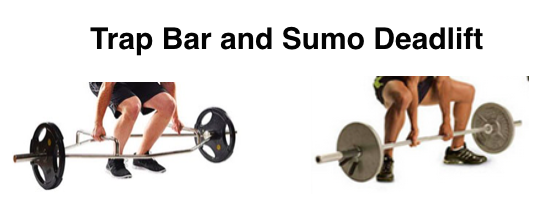
Two excellent deadlift variations are the Trap-bar deadlift and the Sumo deadlift.
Trap bar deadlift is excellent for skinny guys with long legs and arms. If available, then use trap bar deadlifts instead of conventional deadlifts.
Sumo deadlifts are an excellent variation for conventional deadlifts and help you lift even more weight due to short bar travel distance.
I suggest you alternate conventional and sumo deadlifts ever 4-6 weeks to keep variety in your workouts.
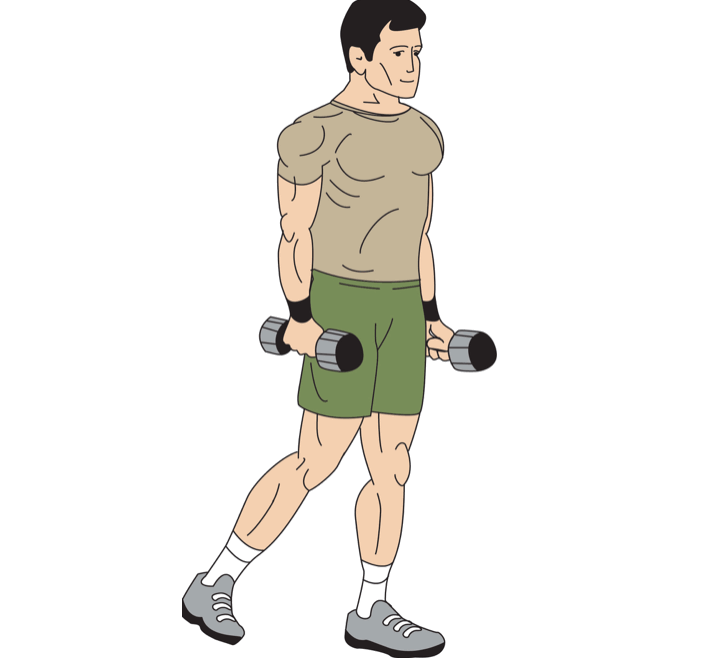 Single leg deadlifts are brutal yet excellent muscle builders
Single leg deadlifts are brutal yet excellent muscle buildersRecommended Deadlift Programs
1. Deadlift off the floor is a cool program to improve you deadlift dramatically.
2. Best 40 Day Muscle Building Program: 40 Excellent moves to build maximum muscle mass in as little as 40 days. Try the MI40 Muscle building Program now.
Recent Articles
-
Bodybuilding Workouts & Muscle Building Workout Routines that Build Muscle
Jul 01, 17 09:52 AM
Discover effective bodybuilding workouts and muscle building routines with strategies to make every workout a killer one. Download free 3-day, 4-day or 5-day workout routines. -
Why Beginner Bodybuilders must use Light Weights for Muscle Gain
Jul 01, 17 09:44 AM
Discover the science why beginner bodybuilders must use light to moderate weights to gain maximum muscle mass in the first 2-3 months of training to gain muscle, prevent injuries and grow bigger. -
How to do a S.W.O.T Analysis of Your Bodybuilding Workout
Oct 26, 16 01:41 AM
Looking to take your bodybuilding workout to the next level? Then do a SWOT analysis of your muscle building workout to increase your lifts every workout.


